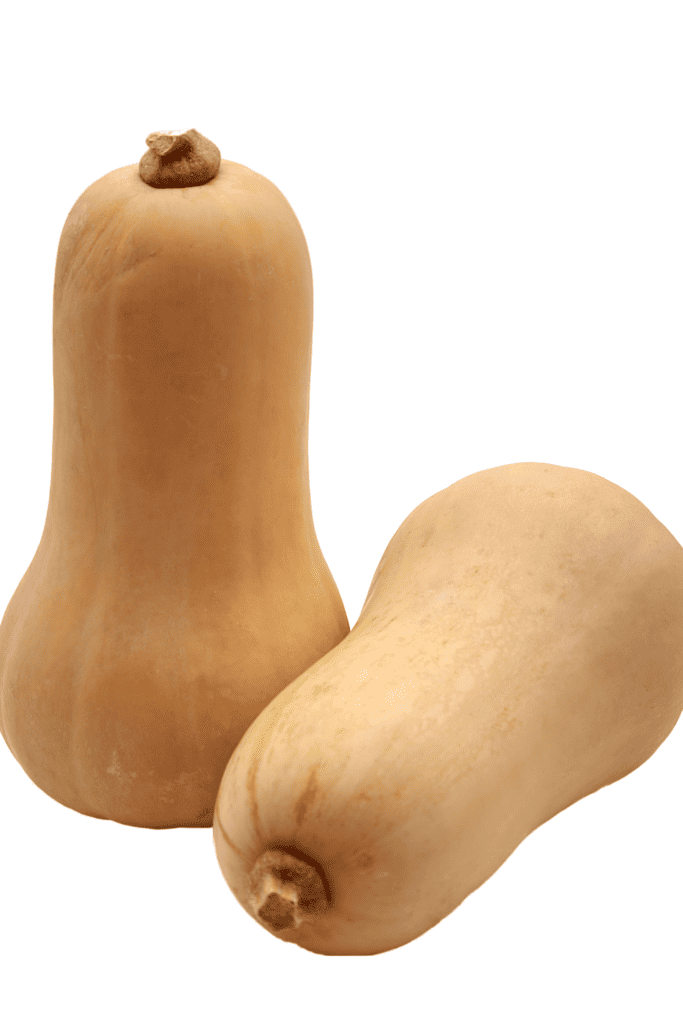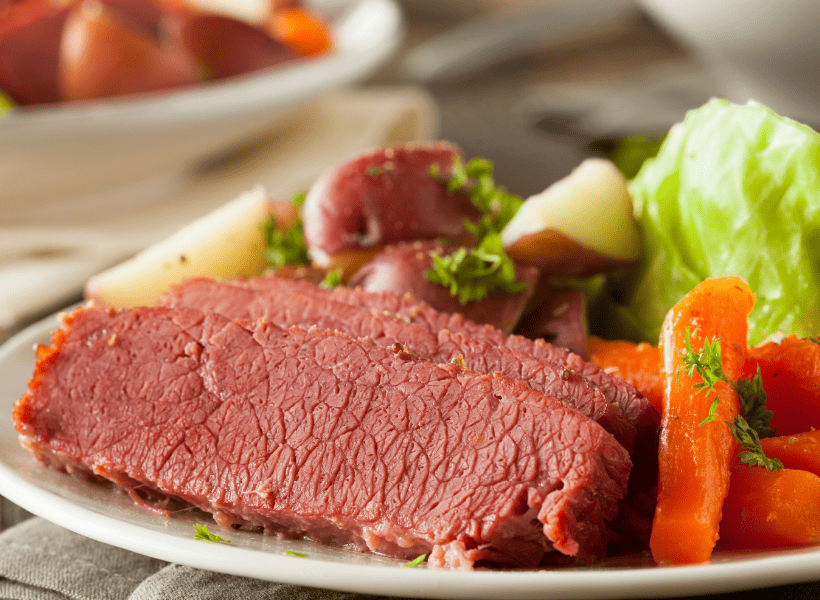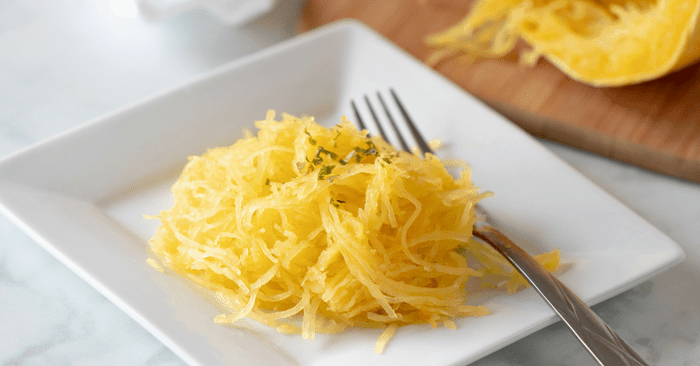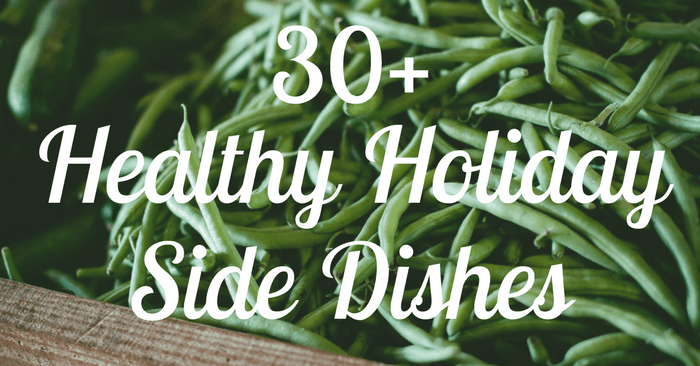Savory Butternut Squash Noodles with butter, sage and cinnamon are a low-carb, keto and vegetarian friendly substitute for traditional pasta that the whole family will love! And the best part is, this dish can be on the table in under 15 minutes!
When it comes to vegetables, I am not one that typically likes to take short cuts, but there is one exception that I have found. Pre-packaged butternut squash “noodles” that you can find in most any larger grocery store, are absolutely amazing! The taste and texture are not compromised at all from being pre-spiralized. And they make getting an easy weeknight meal on the table in a hurry a breeze.
If you’ve never had sauteed butternut squash, the best way to describe the taste is fairly mild, somewhat sweet with a subtle nutty flavor. It tastes like a combination of sweet potatoes or carrots and really mild turnips. Butternut squash noodles are similar to this Spaghetti Squash and Meatballs recipe and are so versatile.
The flavors of the squash and the butter sauce is this recipe are amazing when served with Oven Baked Sirloin Steak or these Rosemary Chicken Thighs, but it makes the perfect side dish with just about any main dish you are serving.
Ingredients Needed for Savory Butternut Noodles
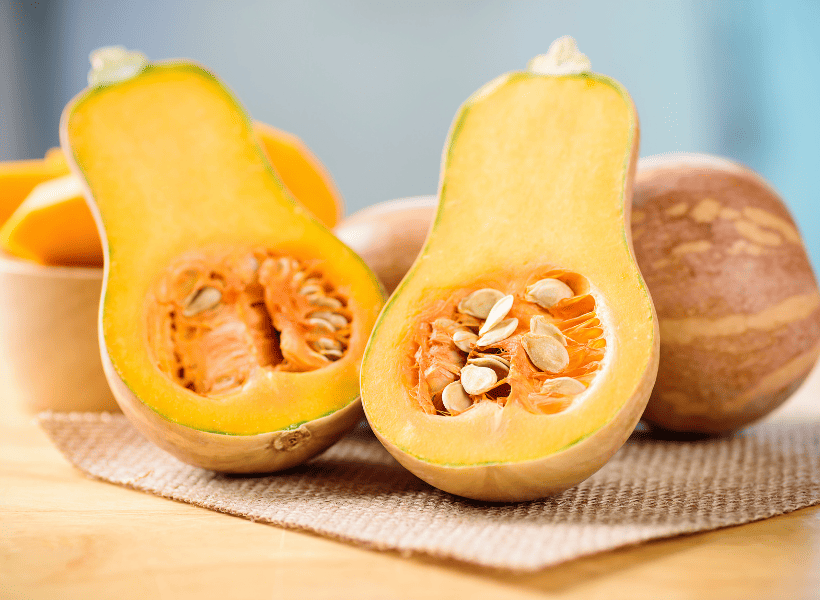
- 2 T. extra virgin olive oil
- 4 c. pre-packaged butternut squash “noodles”
- 3 T. unsalted butter
- 1½ T. fresh sage, chopped
- 2 t. ground cinnamon
- Sea salt and freshly ground black pepper, to taste
How to Make The Best Squash Noodles Recipe
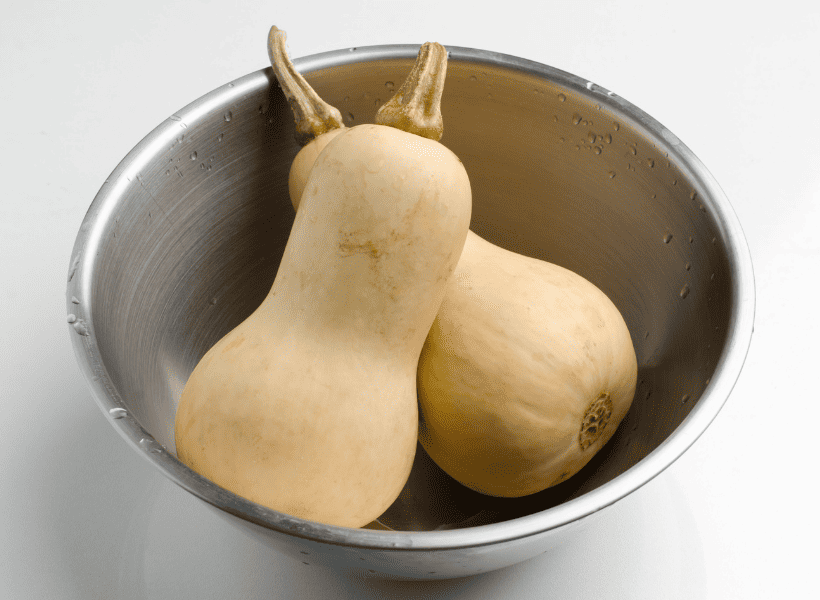
- Heat olive oil in a large skillet over medium to medium-high heat. Add butternut squash noodles and cook for 4-5 minutes, turning frequently to ensure they cook evenly.
- When noodles are slightly softened, or al dente, remove from pan and set aside. The actual cooking time will depend in the thickness of your noodles.
- Keep the noodles warm while you make the sauce. Add butter to pan and heat until melted. Stir in chopped sage and cinnamon and cook until fragrant, approximately 2-3 minutes, stirring frequently.
- Return butternut squash noodles to pan and toss to coat in sage, brown butter sauce. Remove from heat and season with salt and pepper, to taste.
Serve immediately with your favorite entrée or as a light main course. Store leftovers in an airtight container for up to 3 days.

14-Day Healthy Eating Meal Plans: 1500 Calories
Take the guess work out of healthy eating. No more searching for healthy recipes. 78 pages of recipes with calories, macros, and shopping lists — all included!
Is Butternut Squash Healthy?
Butternut squash is very healthy. Just one serving has more than 100% of your daily requirement of vitamin A. It’s also a great source of fiber, vitamin C, magnesium, calcium and calcium. There are many health benefits associated with the vitamins and nutrients found in butternut that you can read all about this in this article on Healthline.
Here is a fun fact you may not know! Though most people think of butternut squash as a vegetable, but because it has internal seeds, it is botanically classified as a fruit! And a delicious one at that.
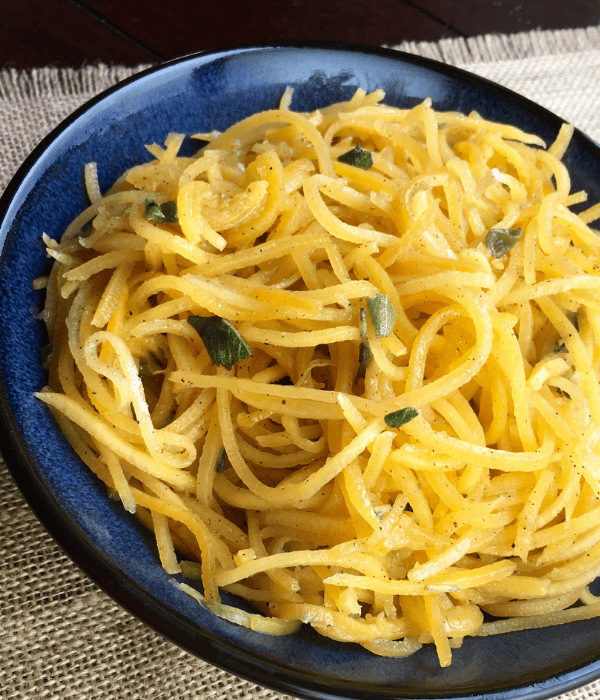
Best Way to Cut Butternut Squash
If you can’t find the prepackaged spiralized noodles, it is easy enough to do them yourself with a few simple steps.
- Place the squash on a cutting board. Using a sharp knife, trim off the top and bottom.
- Next, you’ll split the squash in half, starting at the long neck section, cutting down to the round bulbous end.
- If you want to remove the skin, now is the time. It is easier to do when you’re working with it cut into halves. The skin is fairly tough, so you’ll need to peel it away using a swivel blade vegetable peeler or a sharp knife.
- Once it has been peeled, cut the base section in half to expose the seeds.
- Scoop all the seeds out using a spoon.
- If you are going to make vegetable noodles out of it, cut it into chunks that will fit into your spiralizer.
Tips for Buying and Storing
- The first thing to notice when you pick up the squash is the weight. It should feel heavier for its size than you’d expect.
- The outer texture of a matured butternut squash should be smooth with yellowish orange color.
- Check it over good for bruises and blemishes. Frostbite marks will look a lot a bruise and you’ll want to avoid that one.
- It is also very important to check for punctures or holes. If there are holes in the squash, bacteria and mold can form inside the squash.
- Once you get the squash home, you’ll want to store it on the shelf in your pantry. Placing it in the fridge will cause it to soften and become mushy quickly.
Toppings and Add-ins for Sauteed Spiralized Squash
Add-ins: You can put your own spin on this recipe by adding different herbs and spices. Try adding fresh basil, fresh parsley or red pepper flakes. Serve it over a lean meat or with your favorite protein for a complete meal.
Toppings: If you want to make this dish a little more decadent, top it off parmesan cheese with your favorite sauce. The sauce in this recipe can easily be adapted to a creamy sauce by adding about 1/2 heavy whipping cream.
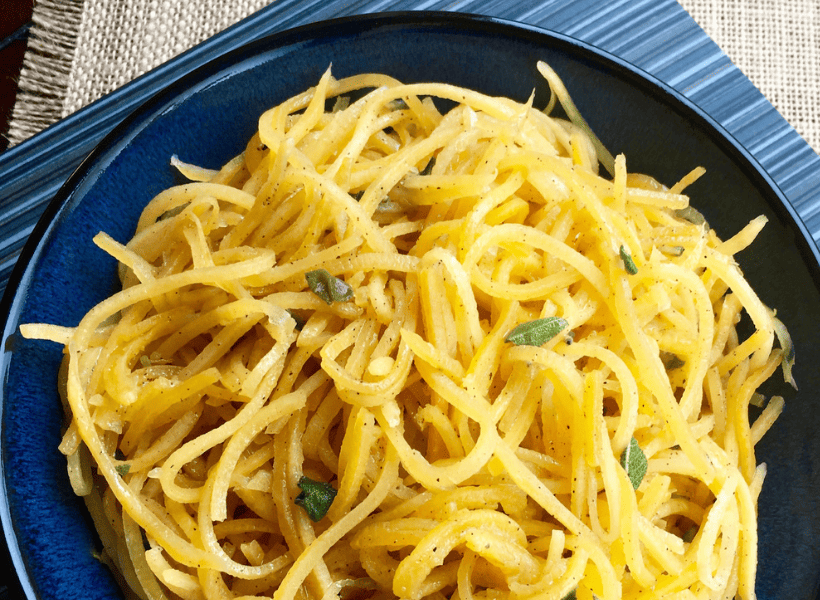
Want more Healthy Vegetable Recipes?
- Mexican Street Corn
- Easy Parmesan Breakfast Potatoes
- Vegetable Pad Thai
- Mediterranean Roasted Vegetables
- Easy Roasted Asparagus
- Instant Pot Mashed Potatoes
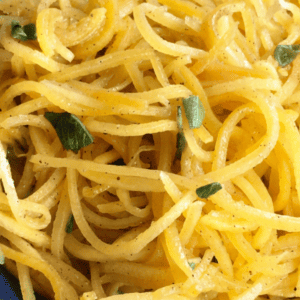
Butternut Squash Noodles
Ingredients
- 2 T Extra Virgin Olive Oil
- 4 cup Butternut Squash Noodles pre-packaged, spiralized
- 3 T butter unsalted
- 1½ T fresh sage chopped
- 2 T ground cinnamon
- Sea salt and ground pepper to taste
Instructions
- Heat olive oil in a large skillet over medium to medium-high heat. Add butternut squash noodles and cook for 4-5 minutes, turning frequently to ensure they cook evenly.
- When noodles are slightly softened, or al dente, remove from pan and set aside. The actual cooking time will depend in the thickness of your noodles.
- Keep the noodles warm while you make the sauce. Add butter to pan and heat until melted. Stir in chopped sage and cinnamon and cook until fragrant, approximately 2-3 minutes, stirring frequently.
- Return butternut squash noodles to pan and toss to coat in sage, brown butter sauce. Remove from heat and season with salt and pepper, to taste.

